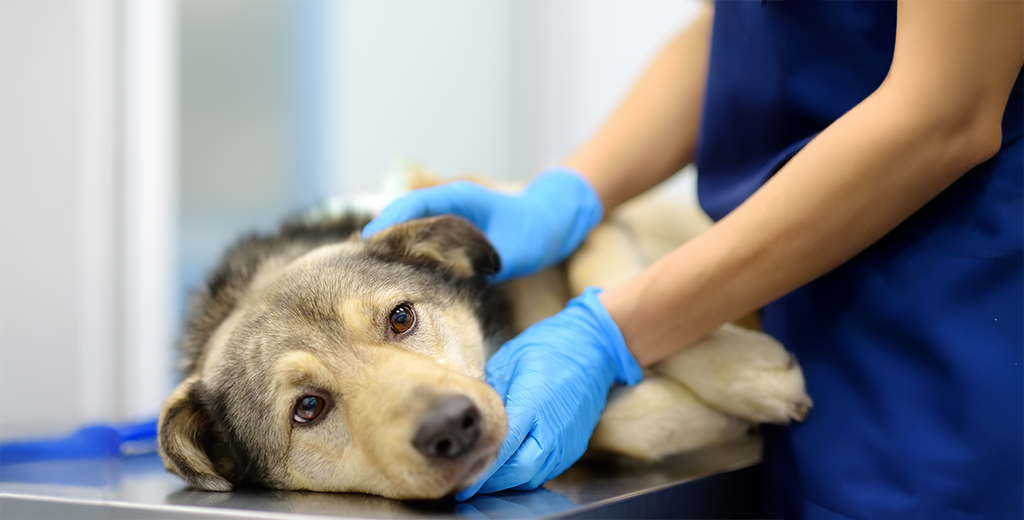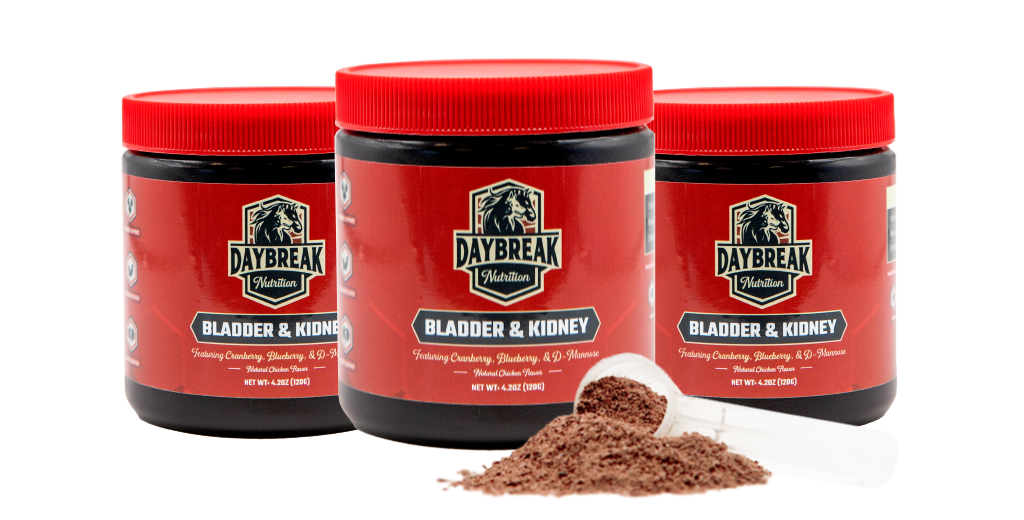Urinary tract infections (UTIs) in dogs can be uncomfortable and distressing for our furry friends.
Recognizing the signs early and taking proactive measures can help alleviate their discomfort and prevent future infections.
In this post, we are going to explore the signs of UTIs in dogs, and 5 ways to ease dog UTIs.
Let’s dive in!

What Are the Signs of UTIs in Dogs?
Signs of a UTI in dogs can vary, but common indicators include:
- Frequent Urination: Your dog may need to go outside more often than usual, often producing only small amounts of urine.
- Straining to Urinate: Dogs may appear uncomfortable or in pain while trying to urinate.
- Blood in Urine: You might notice a pink or red tinge in their urine, indicating possible inflammation or infection.
- Licking the Genital Area: Increased licking of the genital area can signal irritation or discomfort.
- Foul Odor: Urine may have a strong or unpleasant smell.
If you observe any of these symptoms, it’s essential to consult your veterinarian for a proper diagnosis and treatment.
5 Ways to Ease Dog UTIs
1. Use a Cranberry Supplement for Dogs
Cranberry supplements are well-known for their ability to support urinary tract health.
They contain compounds called proanthocyanidins, which can help prevent bacteria from adhering to the urinary tract lining, reducing the risk of infection.
Adding a cranberry supplement to your dog’s daily routine can be a proactive measure against UTIs.
Out of all the dog cranberry supplements, Daybreak Nutrition’s Bladder & Kidney is one of the best.
It is an excellent solution for managing UTIs in dogs, thanks to its powerful cranberry extract.
This supplement is specifically designed to alleviate frequent urination often associated with UTIs, making life more comfortable for your pet.
With other premium ingredients like blueberry powder and D Mannose, you can trust that you’re providing your furry friend with high-quality care.
Simply follow the directions on the back and you’re good to go!
2. Ensure Proper Hydration
Keeping your dog well-hydrated is crucial for urinary health.
Adequate water intake helps dilute urine and flush out bacteria, reducing the likelihood of infection.
Encourage your dog to drink plenty of fresh water daily.
You can also add water to their food or offer ice cubes as a treat to increase their fluid intake.
3. Maintain a Clean Environment
A clean living environment can help prevent UTIs in dogs.
Bacteria can thrive in unclean areas, increasing the risk of infection.
Regularly clean your dog’s bedding, toys, and living spaces.
After walks, ensure your dog is clean, especially in the genital area, to minimize bacteria exposure.
4. Monitor Diet
A balanced diet can support urinary tract health and help prevent infections.
Certain ingredients can promote a healthy urinary system.
Consider feeding your dog high-quality food that includes ingredients beneficial for urinary health, such as antioxidants and cranberries.
Consult your veterinarian for specific dietary recommendations based on your dog’s needs.
5. Regular Veterinary Check-ups
Regular veterinary visits are essential for maintaining your dog’s overall health and catching potential issues early.
Your vet can monitor your dog’s urinary health and provide guidance on prevention.
Schedule routine check-ups to discuss any concerns you may have about your dog’s urinary health.
Your veterinarian can recommend appropriate tests and treatments to keep your dog healthy and comfortable.

Support Your Dog’s UTI
Easing a dog’s UTI requires a proactive approach that includes dietary adjustments, hydration, and proper hygiene.
By using a cranberry supplement, ensuring proper hydration, maintaining a clean environment, monitoring diet, and scheduling regular veterinary check-ups, you can effectively support your dog’s urinary health and alleviate their discomfort.
If you notice any signs of a UTI, don’t hesitate to seek veterinary care for the best possible outcome.
Thank you for reading!
Affiliate Disclosure
Some of the links on this site are affiliate links. This means that if you click on the link and purchase the item, we may receive an affiliate commission at no extra cost to you. I only recommend products or services that I believe will add value to my readers, however some (not all) do pay us to be on this blog. Your support and theirs helps keep this blog running, and I genuinely appreciate it.
Medical Disclaimer
The information provided on this website is for educational purposes only and is not intended as medical advice. The content shared here is not written by a licensed veterinarian, and it should not be used as a substitute for professional veterinary diagnosis, treatment, or advice. Always consult with your veterinarian or other qualified pet healthcare provider before starting any new treatment or making changes to your pet’s health regimen.




